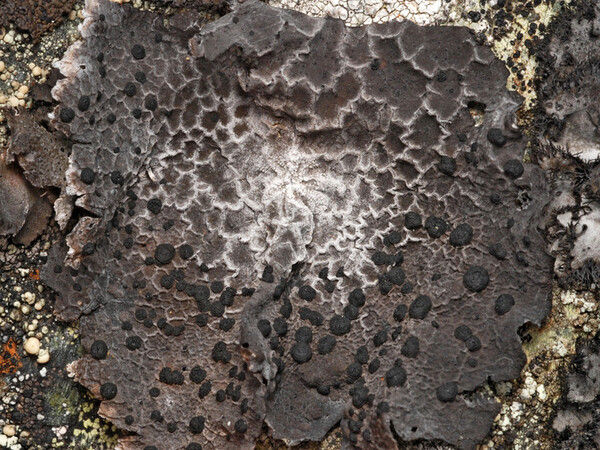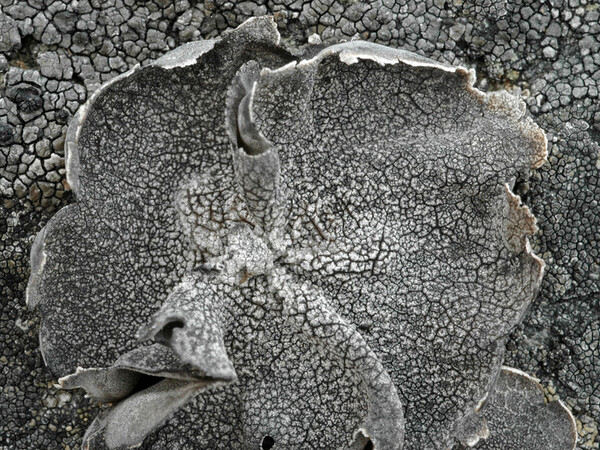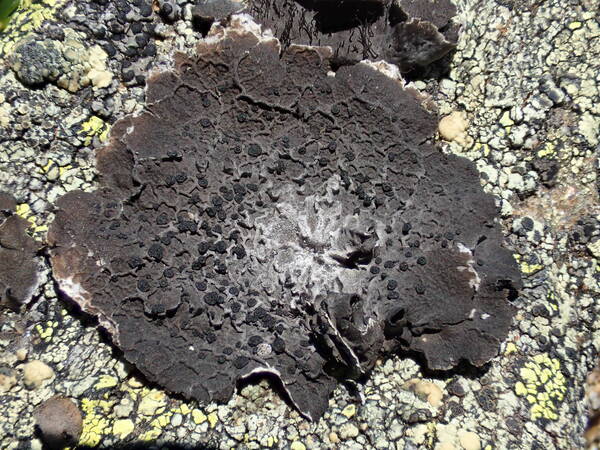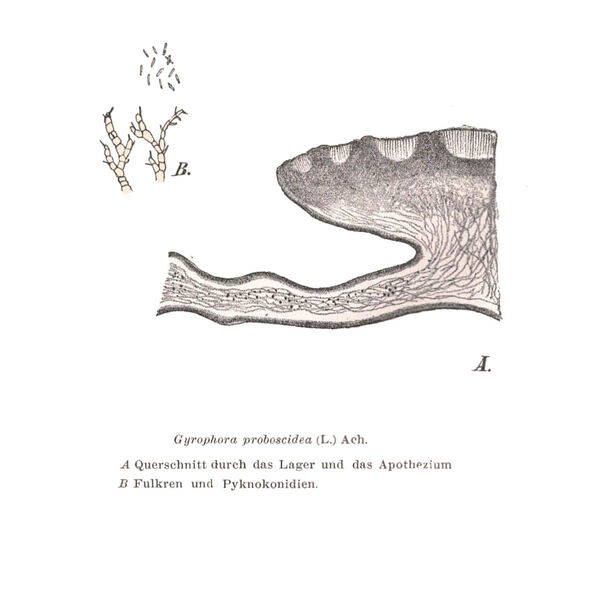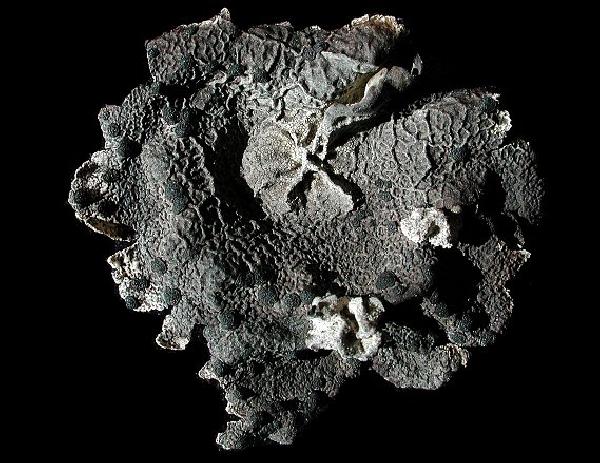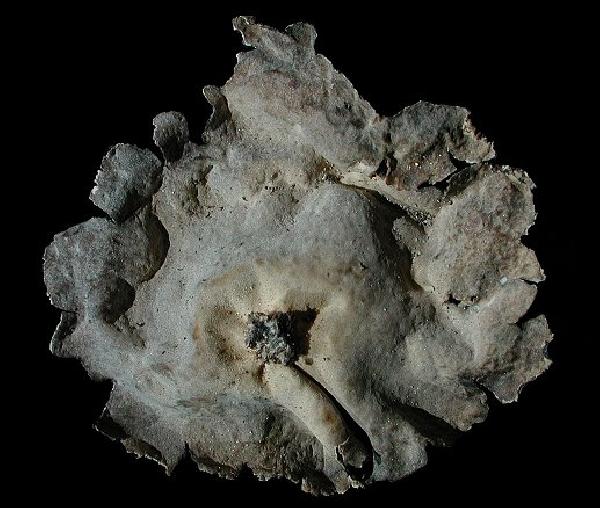Umbilicaria proboscidea (L.) Schrad.
Spicil. Fl. Germ., 1: 103, 1794. Basionym: Lichen proboscideus L. - Sp. Pl., 2: 1150, 1753.
Synonyms: Gyrophora polymorpha var. proboscidea (L.) Schaer.; Gyrophora proboscidea (L.) Ach.
Distribution: N - TAA (Nascimbene 2003, Nascimbene & al. 2022), Lomb, Piem (Tretiach 1993, Isocrono & al. 2004), VA (Piervittori & al. 1998, Piervittori & Isocrono 1999, Watson 2014).
Description: Thallus foliose-umbilicate, dorsiventral, monophyllous, thin and fragile, strongly adpressed, orbicular or elliptic in outline, 2-5(-8) cm diam., with lacerate, shallowly incised, slightly up-turned margins, attached by a central holdfast. Upper surface dark brown to black, dull, with a reticulate pattern of ridges over the umbilicus, fading to vermiform ridges toward margins, the central umbo raised and often white-pruinose. Lower surface pale brown, darker toward margins, even or with shallow depression around umbilicus, usually erhizinate or rarely with a few simple or sparsely branched rhizinomorphs; thalloconidia absent. Upper cortex 8-16 µm thick: medulla white, loose; lower cortex paraplectenchymatous. Apothecia rather rare, black, gyrodisc, sessile, to 1.5 mm across. Asci 8-spored, clavate, thick-walled, with an amyloid apical dome, Umbilicaria-type. Ascospores 1-celled hyaline, ovoid, (10-)12-15(-17) x (3.5-)5-7.5 µm. Photobiont chlorococcoid. Spot tests: K- or K+ yellow turning red, C+ red, KC+ red, P- or P+ yellow. Chemistry: norstictic, gyrophoric and lecanoric acids.Note: a mainly arctic-alpine, circumpolar lichen found on siliceous rocks, often on small boulders, ecologically similar to U. cylindrica, but with a narrower range, with optimum in colder and less continental areas above treeline.
Growth form: Foliose, umbilicate
Substrata: rocks
Photobiont: green algae other than Trentepohlia
Reproductive strategy: mainly sexual
Commonnes-rarity: (info)
Alpine belt: rather common
Subalpine belt: rare
Oromediterranean belt: absent
Montane belt: absent
Submediterranean belt: absent
Padanian area: absent
Humid submediterranean belt: absent
Humid mediterranean belt: absent
Dry mediterranean belt: absent
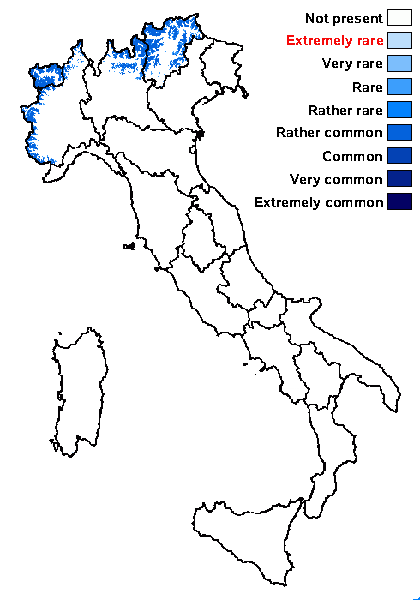
Predictive model
Herbarium samples
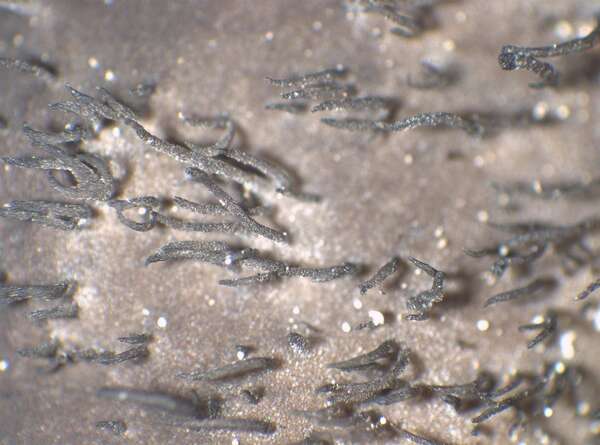

P.L. Nimis; Owner: Department of Life Sciences, University of Trieste
Herbarium: TSB (14270)
2003/03/17
lower surface
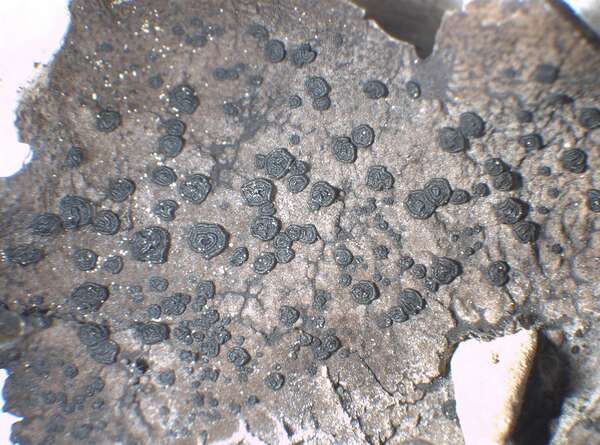

P.L. Nimis; Owner: Department of Life Sciences, University of Trieste
Herbarium: TSB (14270)
2003/03/17
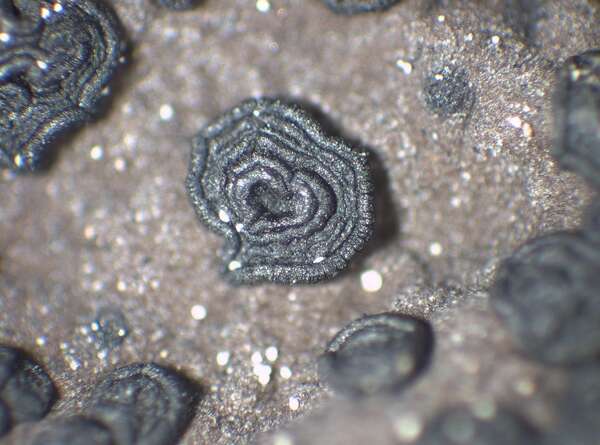

P.L. Nimis; Owner: Department of Life Sciences, University of Trieste
Herbarium: TSB (14270)
2003/03/17
apothecium
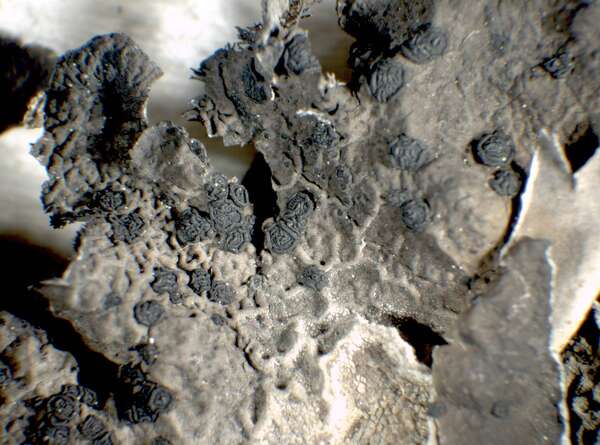

P.L. Nimis; Owner: Department of Life Sciences, University of Trieste
Herbarium: TSB (11076)
2001/12/05


Curtis Randall Björk, - CC BY-SA 4.0
Sugarbowl-Grizzly Den Provincial Park, British Columbia, Canada
September 2017
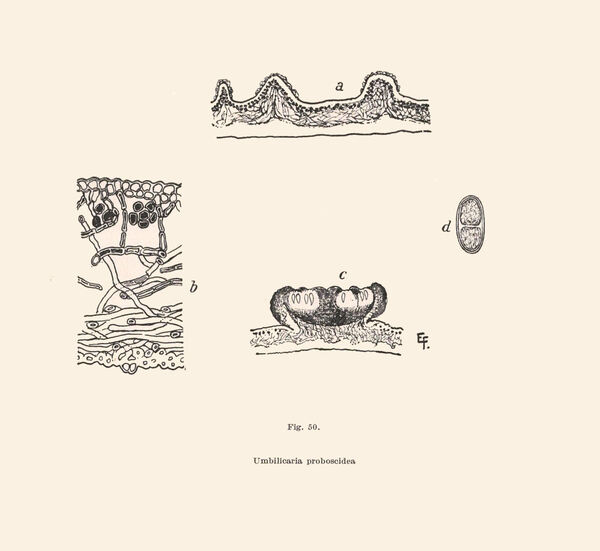
Frey E. 1933. Cladoniaceae (unter Ausschluß ded Gattung Cladonia) und Umbilicariaceae. In: Rabenhrst’s Kryptogamenflora von Deutschland, Österreich und der Schweiz. 15: 1-208.
Growth form: Foliose, umbilicate
Substrata: rocks
Photobiont: green algae other than Trentepohlia
Reproductive strategy: mainly sexual
Commonnes-rarity: (info)
Alpine belt: rather common
Subalpine belt: rare
Oromediterranean belt: absent
Montane belt: absent
Submediterranean belt: absent
Padanian area: absent
Humid submediterranean belt: absent
Humid mediterranean belt: absent
Dry mediterranean belt: absent

Predictive model
| Herbarium samples |


P.L. Nimis; Owner: Department of Life Sciences, University of Trieste
Herbarium: TSB (14270)
2003/03/17
lower surface


P.L. Nimis; Owner: Department of Life Sciences, University of Trieste
Herbarium: TSB (14270)
2003/03/17


P.L. Nimis; Owner: Department of Life Sciences, University of Trieste
Herbarium: TSB (14270)
2003/03/17
apothecium


P.L. Nimis; Owner: Department of Life Sciences, University of Trieste
Herbarium: TSB (11076)
2001/12/05


Curtis Randall Björk, - CC BY-SA 4.0
Sugarbowl-Grizzly Den Provincial Park, British Columbia, Canada
September 2017

 Index Fungorum
Index Fungorum
 GBIF
GBIF
